Best 360 camera 2025: our top rated choices for capturing every angle

TechRadar’s camera experts have been testing 360 cameras since the format first emerged. Early models were bulky and inconsistent. Things are very different in 2025: based on our experience, the best 360 cameras today are powerful, pocket-sized tools that shoot high-resolution video on the fly and make it easy to edit the results.
Take the Insta360 X5. We think it’s the best example of what a 360 camera can do right now. An evolution of the already capable X4, its larger sensors impressed us in testing, producing better quality video, especially in low lighting. We also appreciated its neat design, complete with easily replaceable lenses. It’s an incredibly flexible tool for creators.
We’ve included 360 cameras in this guide to cover a range of different users requirements, from 8K shooting tools to more affordable choices. Each has been tested in real-world conditions by our in-house specialists. We’ve distilled their insights and feedback below, along with some alternative options to consider, all to help you choose your next 360 camera with confidence.
⭣ Read more
Why you can trust TechRadar's choices
Every 360 camera featured in this guide has been tested extensively by one of TechRadar’s seasoned reviewers. Our experts have tested every 360 camera since the very first consumer models hit the market, so we have intimate, first-hand knowledge of the format.
We evaluate 360 cameras in the kind of conditions and use-cases they’ll face in the real world, ranging from immersive content creation to capturing fast-paced action. We test for several key factors, including image quality, the effectiveness of image stabilization and the smoothness of stitching. We also think about the user experience, looking at app functionality, editing flexibility and how easy each 360 camera is to use.
All of our camera recommendations are based on first-hand experience. We consider each model on its own merits, as well as comparing it to its competitions on price and performance. The goal is to give you a complete view of what’s available for your needs and budget.
The quick list
If you want a shortcut to the best 360 degree cameras, the round-up below will give you an instant overview of our favorite options. When you find one that fits your requirements, you can use the links beneath each entry to jump down to our full summaries.

The best 360 degree camera overall
With larger sensors for better low-light video, plus improved audio, the Insta360 X5 is the best all-round 360 camera you can buy right now.

The best cheap 360 degree camera
Affordable and easy to use, the Akaso isn’t the toughest 360 camera, but it delivers decent results with minimal input for the money.
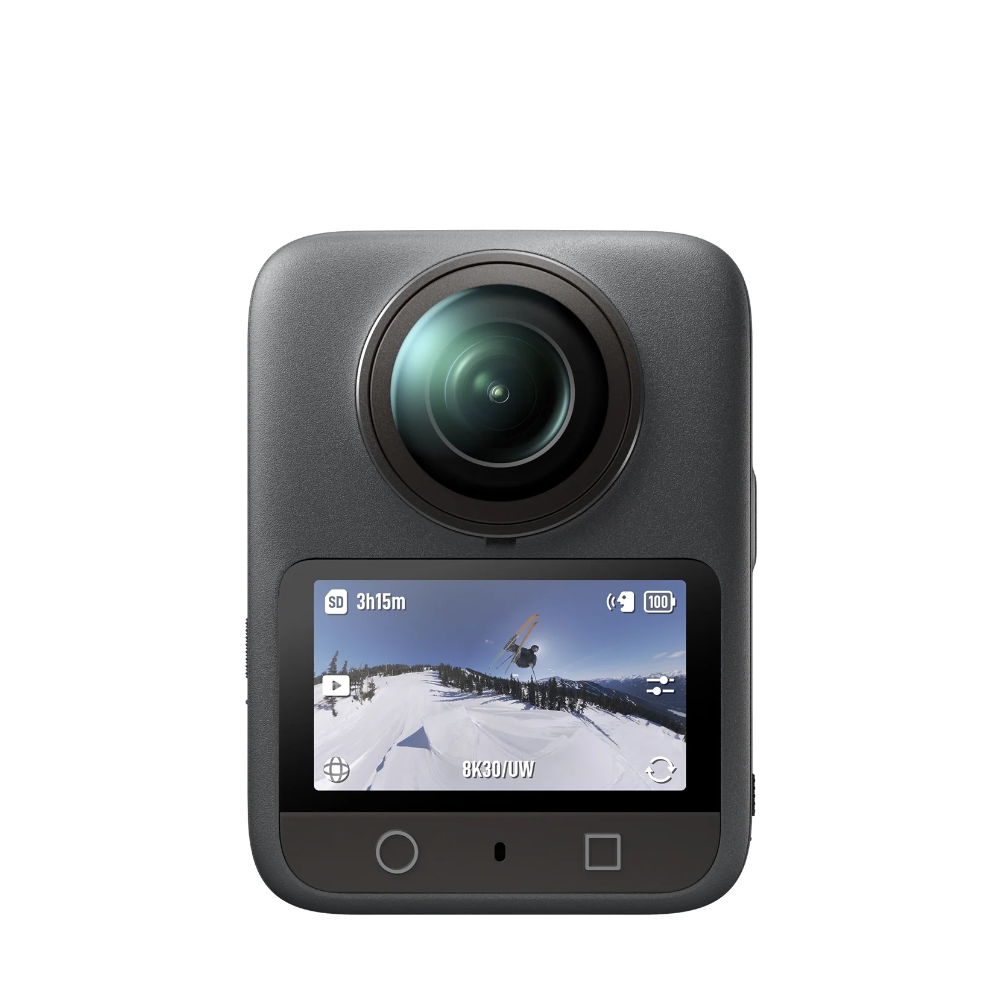
The best 360 degree camera for quality
With a tempting price and solid performance, the DJI Osmo 360 is a slick 360 camera that gives Insta360 serious competition.
Best by use-case
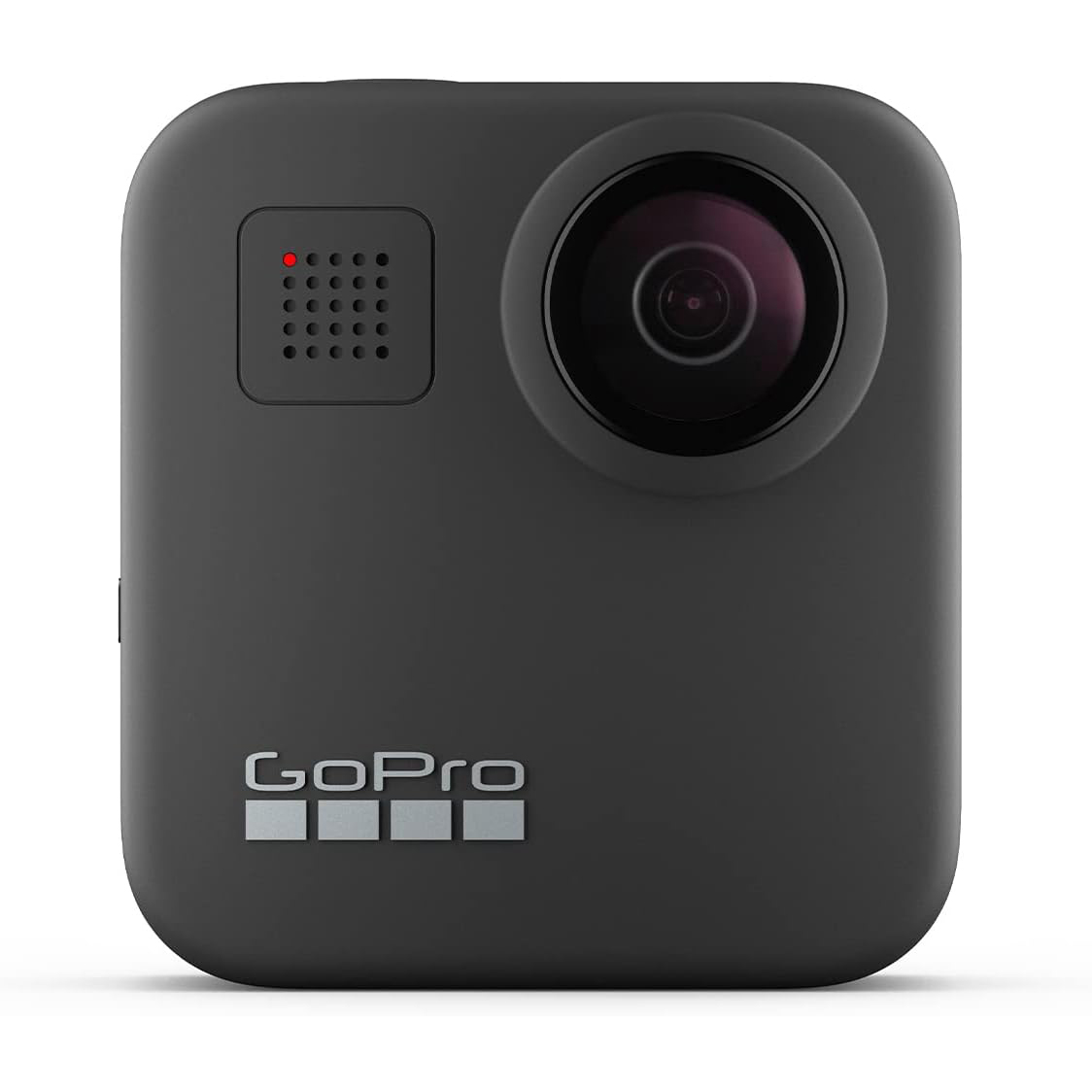
The best 360 degree camera for stabilization
GoPro's superior HyperSmooth stabilization works a treat when capturing fast action such as sports and outdoor escapades.

The best 360 degree camera for detail
Buy this camera for its unbeatable 8K video quality, though we wish its user experience of its supporting app was better.

The best value 360 camera for beginners
With 5.7K 360 degree footage, great image stabilization and an easy user interface, this former flagship offers a lot of value for learners.

Tim is TechRadar's Cameras editor, with over 15 years in the photo video industry and most of those in the world of tech journalism, Tim has developed a deeply technical knowledge and practical experience with all things camera related. Tim notes; "Smartphones may have taken a huge bite out of the point-and-shoot camera market, but 360 degree cameras offer unique photo and video features that help them continue to standout in 2025."
Best 360 camera specs compared
Comparing specs in your head can be difficult. To help you make sense of what the best 360 cameras offer on paper, we’ve set out the key numbers for our top three models side-by-side in the table below. Specs only tell half the story though, so be sure to read our in-depth review of each 360 camera to get the full picture.
| Row 0 - Cell 0 | Insta360 X5 | Akaso 360 | DJI Osmo 360 |
Price | $549.99 / £519.99 / AU$929.99 | $199.99 / £199.99 / AUS329.99 | $TBC / £409.99 / AU$759 |
Max. video resolution | 8K/30fps | 5.7K/30fps | 8K/50fps |
Max. photo resolution | 72MP | 72MP | 120MP |
Waterproof | 15m | N/A | 10m |
Max. battery life | 208 minutes | 60 minutes | 190 minutes |
Weight | 200g | 180g | 183g |
The best 360 degree cameras for 2025
Why you can trust TechRadar
Below you'll find full write-ups for each of the best 360 degree cameras in our list. We've tested each one extensively, so you can be sure that our recommendations can be trusted.
The best 360 degree camera overall

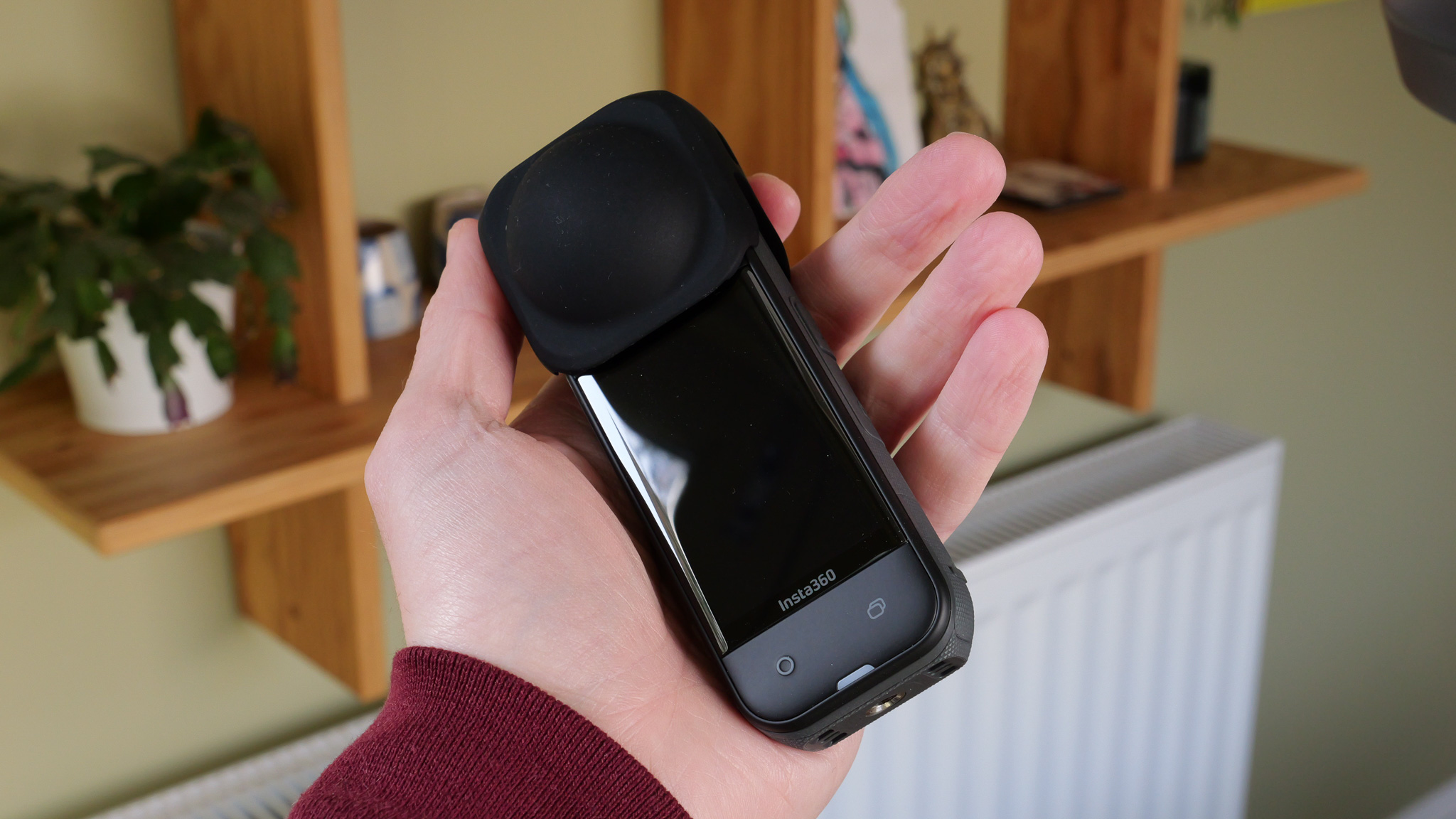



Specifications
Reasons to buy
Reasons to avoid
Insta360 X5 sample video
✅ You want a versatile 360-degree camera: Smooth footage, replaceable lenses and better audio make this the complete package.
✅ You want to shoot in low light: With larger sensors for quality 8K in all conditions, the X5 is a true all-rounder.
❌ You already have an X4: The previous version remains an excellent 360 camera and the X5 doesn't do enough to warrant an instant upgrade.
❌ You just need an action camera: Waterproofing is useful, but a straight action camera is better value for flat footage of your adventures.
The Insta360 X5 refines a winning formula. In our review, we found it a more polished and powerful follow-up to the X4, with notable performance improvements. Most significant is the image quality: we found that its larger 1/1.28-inch sensors deliver sharper, cleaner video, particularly in low light. Combined with Insta360’s AI-powered image processing, the results are consistently impressive.
We appreciated other practical upgrades, too. Deeper waterproofing to 15m (49ft) gives added peace of mind when shooting underwater video, while the introduction of user-replaceable lenses makes it a 360 camera you can use for longer. Insta360 has otherwise kept the design broadly consistent, which is no bad thing. One neat addition is lock-on points for third-party camera mounts.
The app remains useful for quick edits, although it can be demanding on older smartphones, while the camera’s battery can drain quickly at the highest settings. For existing X4 owners, we also think that the improvements won’t feel revolutionary. For everyone else, the X5 is the best 360 degree camera we’ve tested.
Read our in-depth Insta360 X5 review
The best cheap 360 degree camera



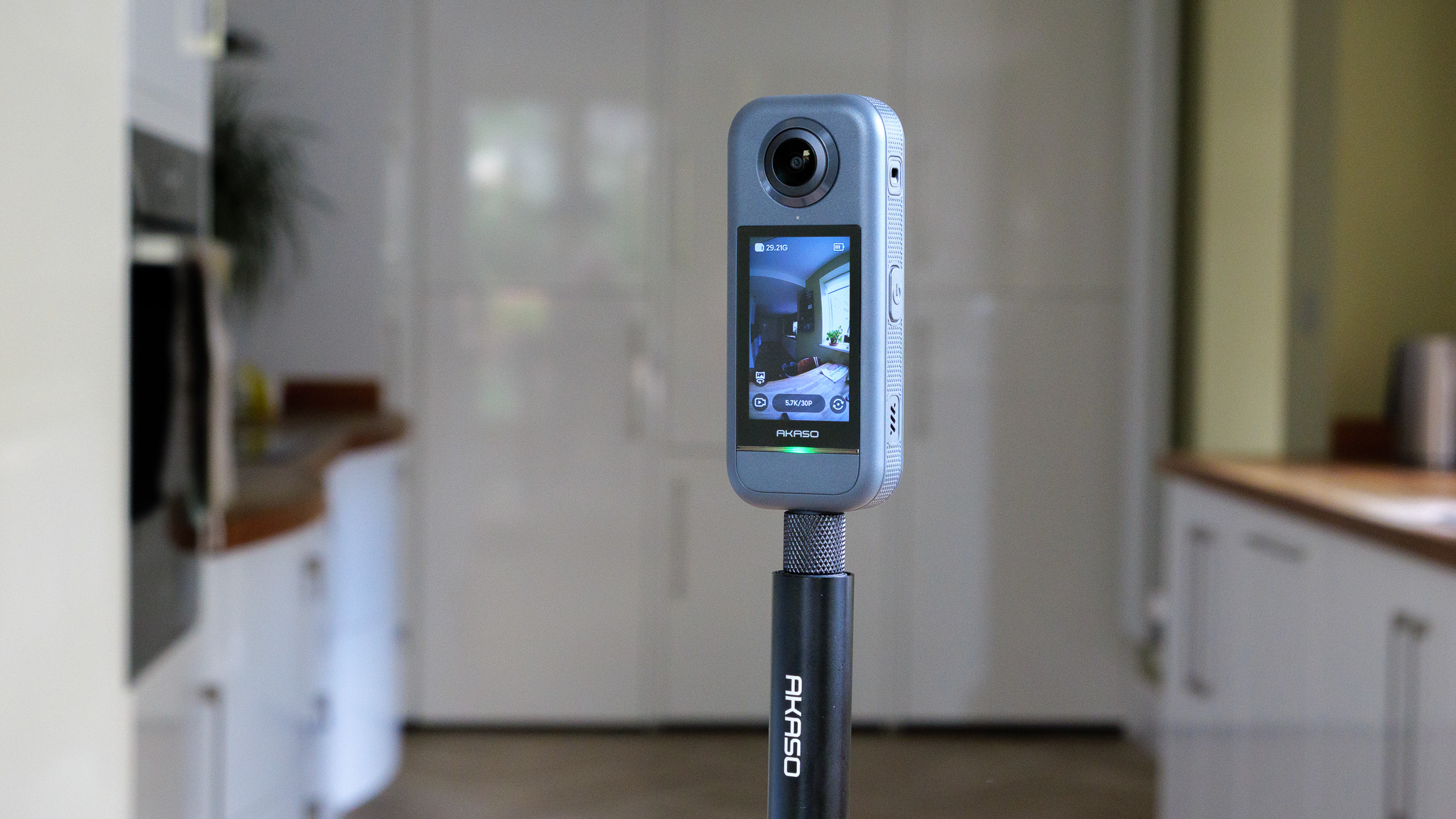

Specifications
Reasons to buy
Reasons to avoid
Akaso 360 video sample
✅ You want an affordable 360 camera: Coming in at significantly less than most 360 camera rivals, the Akaso offers great value.
✅ You want a simple shooting tool: The lack of advance features makes the Akaso a straightforward way to capture 360 video.
❌ You need durability: The Akaso isn't waterproof, dustproof or shockproof, so it's not a replacement for an action camera.
❌ You want the best image quality: Footage from the Akaso is decent, but it falls off quickly when the lighting isn't perfect.
The Akaso 360 is the most affordable 360-degree camera in this list. In our review, we were impressed by how much it delivers for the price. It’s a compact, lightweight shooting tool with effective automatic stitching that allows pretty much anyone to capture decent 360-degree video with minimal user input. The quality of 5.7K/30p video is solid in daylight, with nice colors, reasonable sharpness and good stabilization.
That said, the low price does come with some compromises. Quality falls off as soon as lighting is anything less than the best, with noticeable noise and lost detail, especially when viewing footage on a larger screen. Audio is similarly unreliable, with the stereo mics picking up a lot of wind noise outdoors. We were also disappointed to find that the Akaso 360 lacks any kind of waterproofing, while the touchscreen can be frustratingly unresponsive.
Despite those trade-offs, the Akaso 360 still left a positive impression. It delivers on the fundamentals, even if it lacks the refinement of premium rivals. For creators who want a no-frills introduction to 360 video, the Akaso 360 is a good entry-level option.
Read our in-depth Akaso 360 review
The best 360 camera for quality





Specifications
Reasons to buy
Reasons to avoid
DJI Osmo 360 sample video
✅ You want quality 360 video: Large sensors, big pixels and 50fps frame rates mean the DJI Osmo 360 delivers quality video.
✅ You appreciate value: Packed with features, the Osmo 360 offers similar specs to the X5 for a significantly lower price at launch.
❌ You want to shoot underwater: The Osmo 360 is waterproof but not yet optimized for capturing video beneath the waves.
❌ You own an Insta360 X5: It's a strong competitor, but if you already own the X5, there's not really a reason to swap it.
The Osmo 360 is DJI’s first 360 camera and it’s an impressive debut. In our review, we were struck both by how polished it felt and how much it delivers for the price. It’s robust, easy to use and offers useful features like built-in storage. It also delivers on quality: using a pair of 1/1.1-inch sensors, the Osmo 360 shoots 10-bit 8K video at 50fps. Test footage revealed plenty of clean detail and vivid colors. We described stabilization as “faultless” as well.
We found the interface easy to navigate courtesy of the sharp 2-inch touchscreen. There are editing solutions for different workflows, too: the AI-powered DJI Mimo app makes for quick mobile edits, while deeper tweaks are unlocked by the DJI Studio desktop app.
It’s a not a perfect first effort. We wish that the lenses were replaceable, as they are on the Insta360 X5. And while it’s rated as waterproof to 10m, the Osmo 360 isn’t yet recommended for underwater use due to potential video stitching issues. Even so, we think the Osmo 360 is a strong alternative to the Insta360, especially if you’re already own other DJI products like the compatible Mic Mini.
Read our in-depth DJI Osmo 360 review
The best 360 degree camera for stabilization




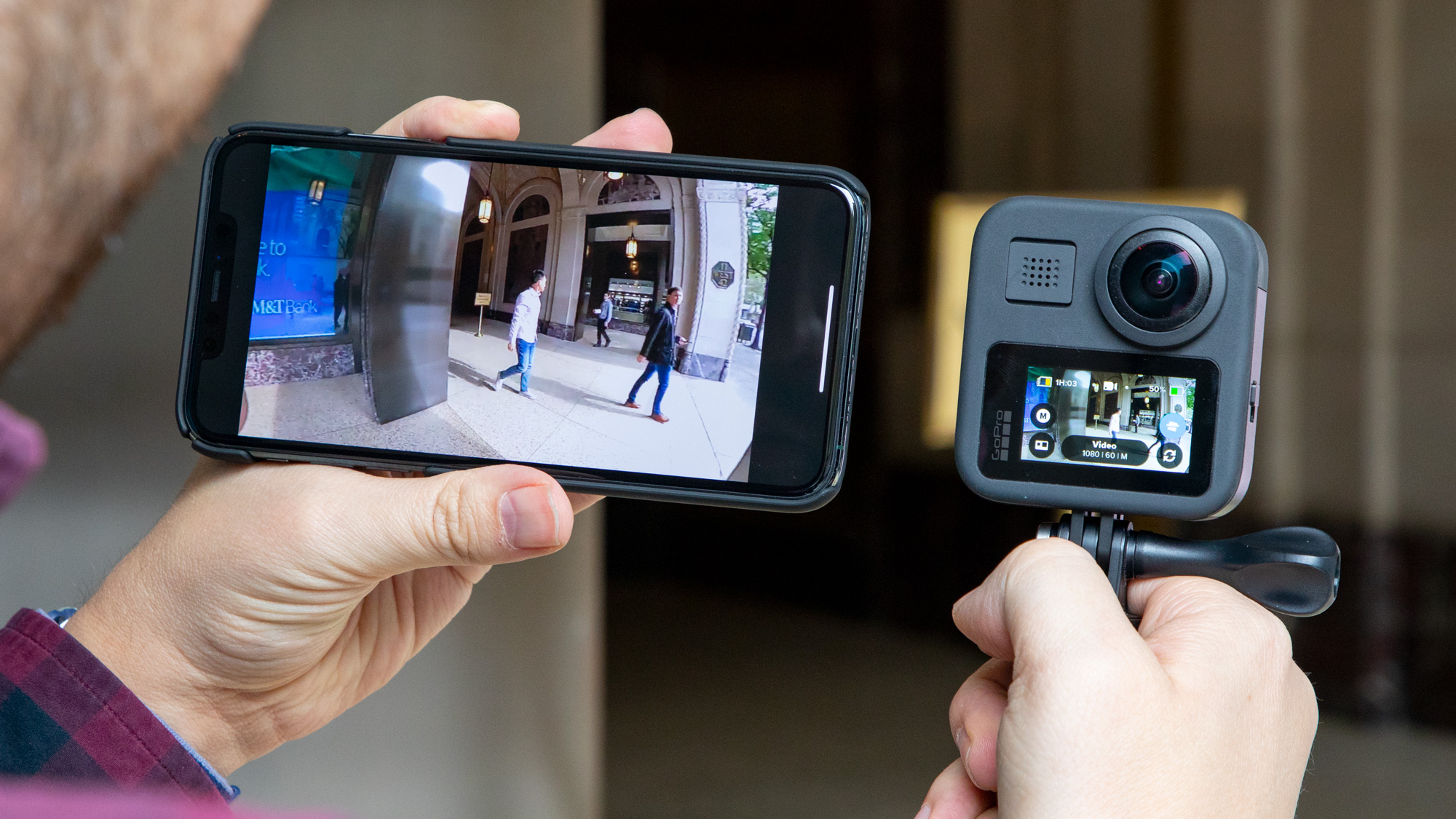
Specifications
Reasons to buy
Reasons to avoid
GoPro Max sample video
✅ You want video reframing: Editing and reframing tools in the GoPro smartphone app makes it possible to crop footage after shooting.
✅ You need image stabilization: Fast moving action can be stabilized with great in-camera technology.
❌ You are shooting in low-light: The sensor size and technology results in a disappointing level of noise in the shadows.
❌ You need shooting mode variety: The lack of shooting modes is a real limitation that restricts the type of footage that can be captured.
If you're looking to shoot immersive videos of sporting escapades or outdoor adventures, then the GoPro Max is a good alternative to the Insta360 One X2 close. It's waterproof down to five meters without needing a case, and the editing workflow is slick and simple. If you want to turn your 360-degree video into a traditional 2D film – which is one of the main benefits of 360 cams – the app's OverCapture software lets you do this easily, as long as your happy with the final footage being in Full HD.
The Max also amps up many of the features seen on the GoPro's Hero action cams, including superior HyperSmooth stabilization and 360-degree TimeWarp sequences. The slightly sub-par 2D video footage (which is the result of it being converted from a fish-eye images) means the Max falls short of being the ultimate GoPro for both 360 and standard footage. But it's a fantastic option for anyone who wants to shoot action sequences in every direction without the hassle of deciding where to point their action camera, then edit it together quickly later.
Read our in-depth GoPro Max review
The best 360 degree camera for detail


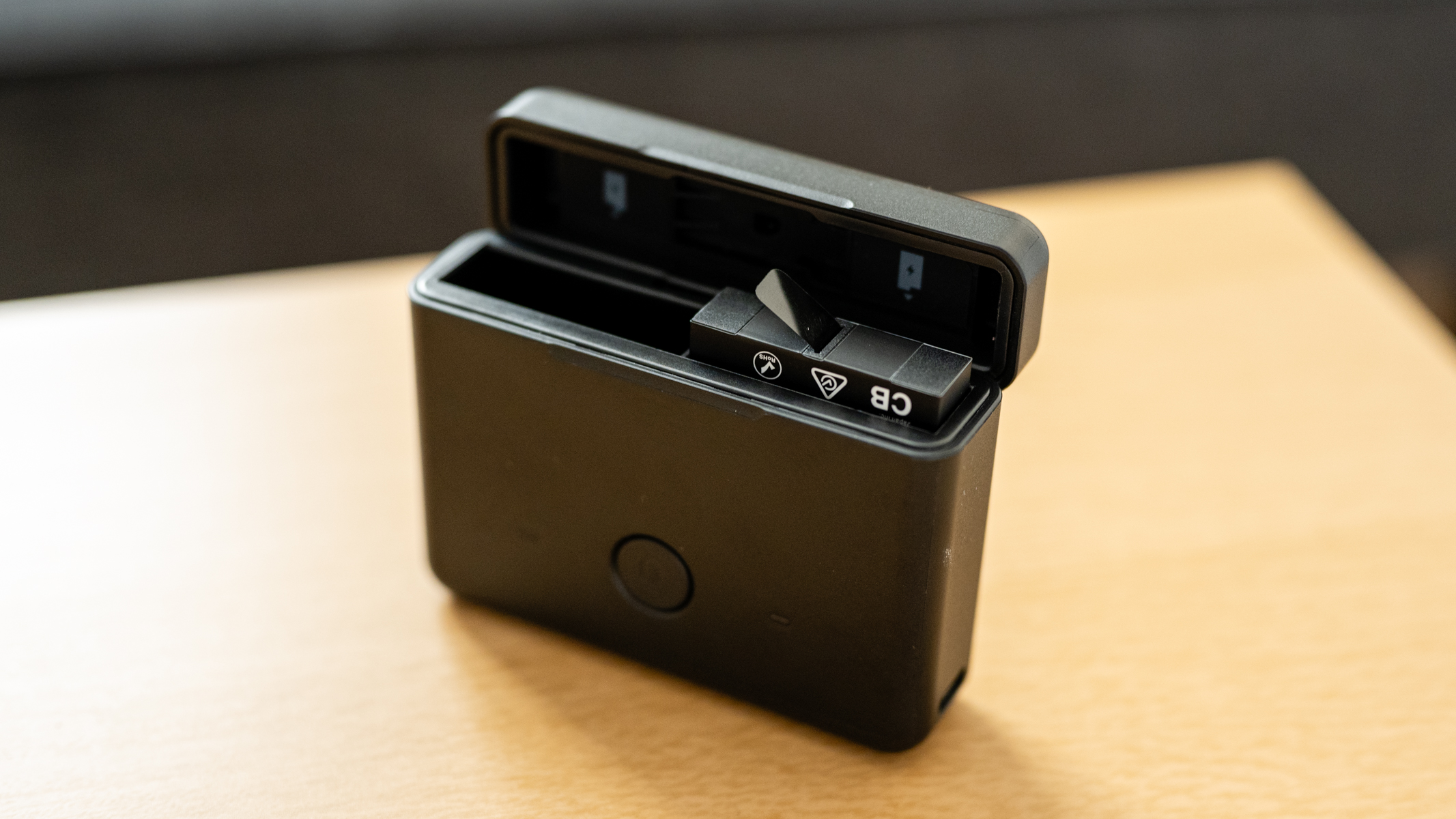


Specifications
Reasons to buy
Reasons to avoid
Kandao Qoocam 3 Ultra video sample
✅ You need the best image quality: 8K capabilities allow for maximum flexibility when cropping shots, plus 96MP photos pack plenty of detail.
✅ You want great slow-mo: Footage can be captured at 120fps using 4K to allow for footage to be slowed down.
❌ You're on a budget: The Insta360 X4 is overall a better camera and it's also cheaper – a real sucker punch to the Qoocam 3 Ultra.
❌ You want lightweight camera: At 11.85oz / 336g this is one of the heavier 360-degree cameras.
Kandao is a lesser-known 360-degree camera veteran in Insta360's shadow, and that's much to the pity because the Kandao QooCam 3 Ultra really is an excellent offering, with some of the best looking image quality available. As Kandao's best camera so far, the QooCam 3 Ultra has superb-quality 8K video and versatile slow motion options to boot. Photo resolution is unmatched too, at up to 96MP.
Beyond it's superb image quality and decent waterproofing, the QooCam 3 Ultra is a larger and heavier X4 rival, let down somewhat by its supporting desktop and app and convoluted photo editing workflows. Overall, the user experience is better with the Insta360 X4, plus the real sucker punch is how Kandao isn't in a position to compete with Insta360 price-wise – the Qoocam 3 Ultra is one of the priciest options in this guide. However, if you're looking for the best Insta360 alternative currently available, look no further.
Read our in-depth Kandao QooCam 3 Ultra review
The best value 360 camera for beginners





Specifications
Reasons to buy
Reasons to avoid
Insta360 X3 video sample
✅ You want a big screen: With a 2.29-inch touchscreen you'll be able to interact with menus and footage easily.
✅ You need high dynamic range: Active HDR mode works its magic at ensuring that all the necessary detail is retained in the highlights and shadows.
❌ You want natural footage: A times, the camera over processes footage and results in an overly synthetic look.
❌ You need ultra-sharpness: 4K videos do appear a little soft which means a lack of overall clarity.
The Insta360 X3 has been updated twice over, but it remains on sale and now represents a good value alternative if you don't need the later model's new features that include 8K video recording and improved battery life. We think it's a top choice for first-time buyers.
At the time of launch, the X3 beat the GoPro Max (yet to be updated) for single-lens 4K clarity, and it excelled when it comes to shooting 5.7K 360-degree footage. While some processing elements can appear more synthetic than a GoPro, we found its Active HDR mode was brilliant at retaining detail in highlights. The continued effectiveness of FlowState image stabilization also impressed in testing.
We felt its significantly larger 2.29-inch touchscreen made the Insta360 X3 a much easier camera to use handheld, even if there remain a few software quirks to be ironed out. Once you’re familiar with the interface, though, it’s largely a breeze. Insta360’s editing workflow also proved seamless in testing, with diverse and intuitive tools complementing the experience. Our review time revealed the claimed 81-minute battery life to be realistic, too. Add in 10m water resistance – twice that of the GoPro Max – and the Insta360 wins out in the battle of the best X4 alternatives.
Read our in-depth Insta360 X3 review

Also consider
We've reviewed a whole range of 360 cameras, which means there are plenty more that almost made it into this list. Here are a few honorable mentions to consider.
Best discounted – Insta360 X4: With quality 8K 360 degree footage, a superb 4K single camera mode and improved battery life, the X4 still has a whole lot to offer and can now be picked up for less.
Best 3D VR – Insta360 Evo: Thanks to its hinged design, the Insta360 Evo can capture 3D VR content across an 180 degree field of view. A perfect solution when paired with a VR headset, if you can find one second-hand.
Upcoming 360 cameras

New 360 cameras arrive less frequently than other formats. That’s partly due to the complexity of developing upgrades when there are two lenses involved. That said, 2025 has been a fruitful year, signalling the arrival of several new models, including the much-awaited Osmo 360 – DJI’s first 360 camera.
We’ll probably have to wait a little while before another major update. An updated to the Insta360 X series could be next: the X3 arrived in April 2024, followed by the X4 in April 2025, which suggests the X6 could land in April 2026 with a refined recipe for shooting in 360.
Probably the most anticipated follow-up though is the GoPro Max 2, a camera which has been in the works for several years. Beset by delays, we know that GoPro is working on a sequel to the Max, but we still don’t know when it will launch.
Leaked images have revealed a prototype unit of the Max 2, featuring GoPro’s folding finger mounts, a microSD card slot, removable battery and large heat sinks for managing temperatures. Beyond that, we don’t know anything about key specs. But it will need solid performance to compete with the best in this list.
As ever, we’re keeping our ear to the ground. TechRadar covers all the latest camera announcements as they happen and tests new releases as soon as they become available. We keep this guide regularly updated with the results of our in-depth reviews, so you always have a clear picture.
How to choose
How do I choose the best 360 degree camera?
The best 360 cameras come in a range of shapes, sizes and styles. That said, most models work in a similar way: they use multiple camera modules (usually two wide-angle lenses placed back-to-back) to capture footage which can then be digitally combined to create a fully spherical video.
But there are also plenty of differences between the 360 cameras in the list above. Many 360 cameras include features such as automatic stitching (which saves you the hassle of manually aligning multiple captures) and image stabilization for steady shots. The top options, including the Insta360 X4 and GoPro Max, can also use software trickery to digitally erase compatible hand grips and selfie sticks from the frame, so you can record yourself without a big boom arm blocking your shot.
Video resolution varies from camera to camera. The best consumer 360-degree cameras shoot in 8K – and with such a wide field of view from twin ultra-wide lenses, resolution matters; if you crop down to a flat frame, the resolution will be much lower.
This cropping functionality allows you to extract a standard ‘flat’ video from the 360-degree footage. This means you can shoot everything that’s going on around you, then select an area of focus when you’re back home. This is particularly useful for fast-moving and unpredictable subjects, such as safari animals or extreme sports enthusiasts.
The relevance of other features, such as GPS, Wi-Fi and slow-mo modes, will depend on what and how you like to record. Many of the best 360-degree cameras feature creative shooting tools and handy connectivity features, plus smartphone apps which make editing and sharing easier.

What’s the best 360 camera for virtual tours?
360-degree cameras are a great choice for shooting immersive virtual tours. Upload 360-degree images or video to a compatible hosting platform (such as Facebook or CloudPano) and visitors will be able to explore a location in full 360 degrees from the comfort of their home. This is particularly useful for venues such as a hotels and museums, as well as real estate listings.
The right 360-degree camera for your virtual tour will depend primarily on whether you plan to shoot a video tour or a static photo tour.
It’s possible to create a virtual tour simply by walking around a location while recording video. If this will be your approach, any of the top cameras in the list above should produce smooth, sharp 360-degree footage. The Insta360 X4 and Kandao QooCam 8K Ultra can capture detailed 8K video and benefit from SuperSteady stabilization smarts (although file sizes for 8K video are much larger and may be compressed by certain platforms).
Most virtual tours use 360-degree stills shot by a tripod-mounted camera. The best 360 cameras in 2025 can capture sharp, immersive images which are perfect for virtual tours. The Insta360 X4 is again a great option here: it shoots dynamic still images at a resolution of 72MP (the highest of any camera in our list), allowing viewers to pan around sharp virtual scenes. It also features a tripod mount on its base for easy positioning.
If you’re looking for a less expensive option of our favorite 360 camera, the Insta360 X3 is an affordable way to shoot 360 stills for virtual tours. It also features a tripod mount and captures 360 stills at a respectable 18MP.
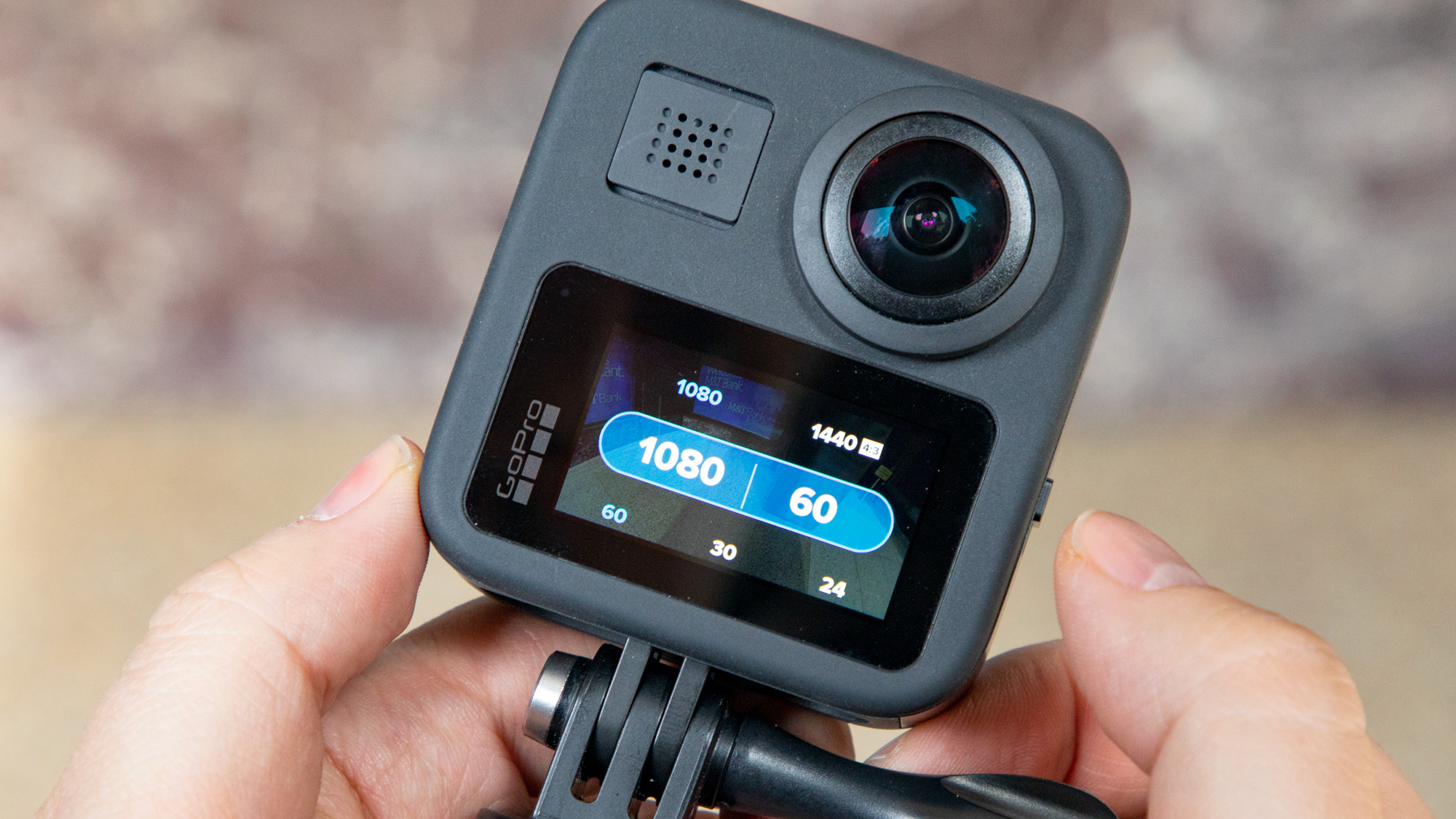
How we test 360 degree cameras
Our reviews are always hands on and actively compare cameras to previous versions or alternative models. We look at various elements, including design, features, performance, and image and video quality.
First up is the camera's design. During this step, we're wanting to get an idea of how the camera handles. Is it small or big, light or heavy, and is that positive or negative for the target audience? We'll put the user interface through its paces and decide how user-friendly and intuitive the workflows are. All of this will be done utilising the built-in touchscreen, which will be assessed for size, quality, and responsiveness.
360-degree cameras are well known for having various modes and feature sets that complement the core 360-degree filming functionality. We test all of these features to see how good they are and whether they are usable in a production context. While doing this, we'll use a formatted SD card to capture both video and photos to enable us to comment on the performance as it relates to quality, low-light performance, and battery life.
These types of cameras rely heavily on the use of a companion app, which we also download and test. If the app unlocks specific features or enables a live-feed view, then we'll comment on that too.

To compare photo and video quality across different 360 cameras, we shoot a consistent range of scenes with each model, from expansive landscapes to close urban environments. We then analyze the resulting footage side-by-side.
For stills, we assess detail retention and color balance, as well as highlights and shadows in unedited, full-resolution exports. We also inspect stitching lines closely, looking for visible seams or ghosting where 360 cameras blend output from their multiple lenses. We’ll also test HDR modes where available, but we use the raw outputs for a fair comparison.
When it comes to 360 video, we evaluate footage shot in both bright outdoor and dim indoor conditions. We look at dynamic range, noise levels and consistency across the stitched frame.
Stabilization is a key test, too. We walk with each camera to see how well footage holds up when in motion. The aim isn’t just to confirm marketing claims, but to see how these cameras perform in real-world use, whether you’re creating immersive travel videos or quick social clips.
After all our testing is complete, we take everything we've learned about the camera and factor in its price to get a sense of the value-for-money it offers before reaching our final verdict.
Sign up for breaking news, reviews, opinion, top tech deals, and more.

Tim is the Cameras editor at TechRadar. He has enjoyed more than 15 years in the photo video industry with most of those in the world of tech journalism. During his time as Deputy Technical Editor with Amateur Photographer, as a freelancer and consequently editor at Tech Radar, Tim has developed a deeply technical knowledge and practical experience with cameras, educating others through news, reviews and features. He’s also worked in video production for Studio 44 with clients including Canon, and volunteers his spare time to consult a non-profit, diverse stories team based in Nairobi. Tim is curious, a keen creative, avid footballer and runner, and moderate flat white drinker who has lived in Kenya and believes we have much to enjoy and learn from each other.
- Paul HattonFreelance writer